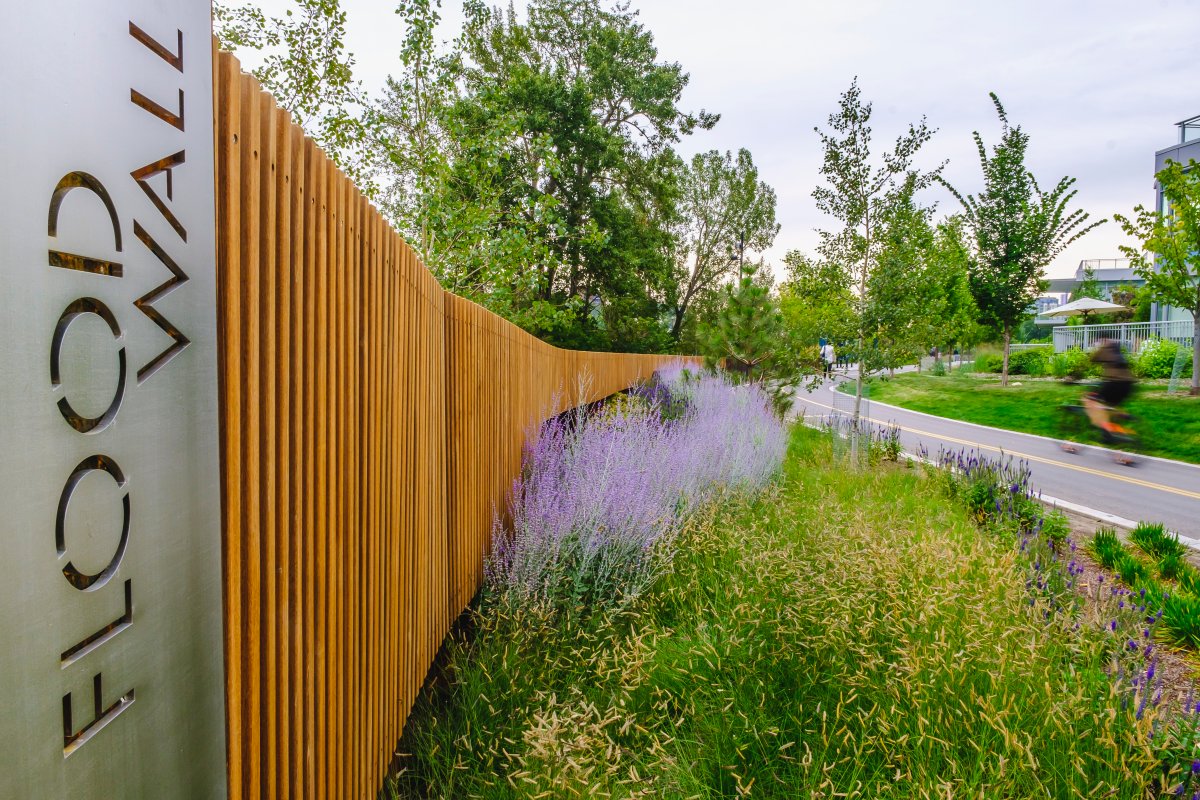Ten years after flooding devastated the city, Calgary’s downtown and Eau Claire neighbourhoods have more protection now that the flood wall is complete.

The downtown flood barrier runs 1.39 kilometres long along the south bank of the Bow River, and consists of steel sheet piles, earthen berms, concrete walls and stop log openings designed to resist a one-in-200-year flood event.
Thursday also marked the completion of the Eau Claire Promenade, the Centre Street pedestrian ramp and the Jaipur Bridge.
“Through incredible volunteerism, a sense of duty and some key investments, we now find ourselves standing here today in an area that was once submerged that not only has required infrastructure to protect us from a one-in-200-year flood event, but an area that has now also become exceptionally community minded and has received beautification,” Mayor Jyoti Gondek said.
Frank Frigo, manager of environmental management with the city, said had the new infrastructure would have protected the downtown along the Bow in 2013.
Protections along the north bank of the Bow and along the Elbow River are also underway.
“With the completion of (the Springbank off-stream reservoir) and working in tandem with the $83 million investment we put into the Glen Moore Gates, the Elbow River components of downtown will also be protected again by 2025 when Springbank is fully functional,” Frigo said.
Frigo said there will be 4.1 kilometres of riverfront protected.
Calgary Skyview MP George Chahal said the upgraded flood protection for Calgary will help protect against extreme weather and climate-related events.
“With the recent increase in extreme climate events, we must continue to work together with our provincial and municipal partners across Canada to ensure the safety and well-being of our communities into the future,” Chahal said.
Alberta’s Minister of Municipal Affairs Ric McIver said he recalls when the 2010 flood was thought to be the worst flooding could get in the city.
“Those of us that thought that turned out to be wrong,” he said.
McIver recalled the frenetic response from homeowners during the 2013 floods who were trying to protect their property from the rising waters.
“It’s a helpless feeling because if you look at the Bow River today, many of us could probably walk across parts of it without getting our knees wet,” McIver said. “But that’s not what it’s like in the spring. And that’s not what it’s like when Mother Nature decides to remind us that she’s in charge.”
McIver said in addition to the construction of the Springbank off-stream reservoir, the province is working to find a spot for upstream protection on the Bow River.
“It’s not just for flood protection, but also mitigation against droughts. I’m told that if you look at 100-year statistics, there’s actually more droughts and there are floods, so it’s all about water and our ability to maintain a sustainable natural environment while protecting people and property from floods, protecting our crops — that provides obviously the food that we need — from drought and maintaining a great quality of life,” he said.













Comments